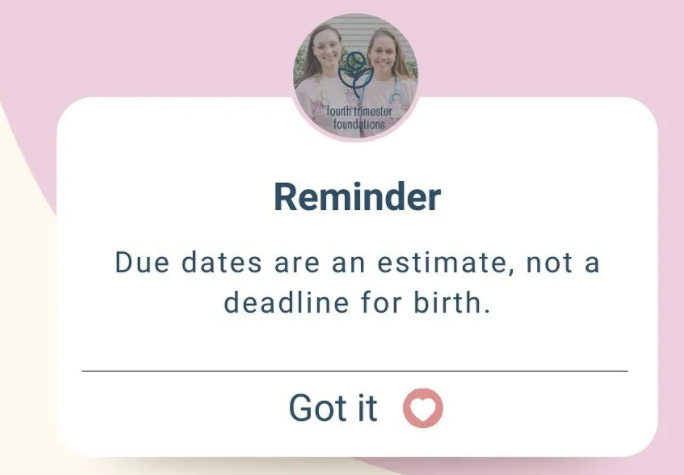Pregnancy due date, more like guess date
If you’re in your third trimester of pregnancy you are likely all too familiar with the incessant “is the baby here yet?!?!?!” messages from literally everyone you’ve ever known. 😵💫😵💫😵💫
Here’s what Evidence Based Birth has to say in an article published in 2015 and updated in 2019:
🤰🏼most providers use a due date calculator called Naegele’s Rule to estimate due dates based on a 28 day menstrual cycle and the assumption that you ovulated on the 14th day of that cycle (helloooo outdated)
🤰🏻accuracy is increased for those who know the exact date of ovulation thanks to fertility tracking or those who have utilized in vitro fertilization to concieve
🤰🏽ultrasounds in the first trimester can also be used as a replacement for Naegele’s Rule and tend to be a little more accurate
🤰🏾researchers found that rather than a “due date,” it would be more appropriate to say that there is a “normal range of time in which most people gave birth” and about half of pregnant people will go into labor on their own by 40 weeks and 5 days (first-time mothers) or 40 weeks and 3 days (mothers who have given birth before). The other half will not.
🤰🏿by far the most important predictor of a longer pregnancy is a family history of long pregnancies—including your own, your mothers, your sisters, and your baby’s biological father’s family history
So next time someone sends you the classic “tell that baby it’s time to come out!” you can respond armed with the evidence, or simply ignore and send them the silent treatment. We condone either. 🤍
Your postpartum nurses Meg and Carly here to prepare you for postpartum and beyond. We want to make sure you have the education you need to care for your own healing body after birth, not just your baby.
Postpartum prep courses occurring virtually and regularly intended to be taken during pregnancy are now open for registration. Our return to work support group is pay what you can and supports that tough back to work transition. Then join us in our online community for the growth, support and empowerment to continue <3


